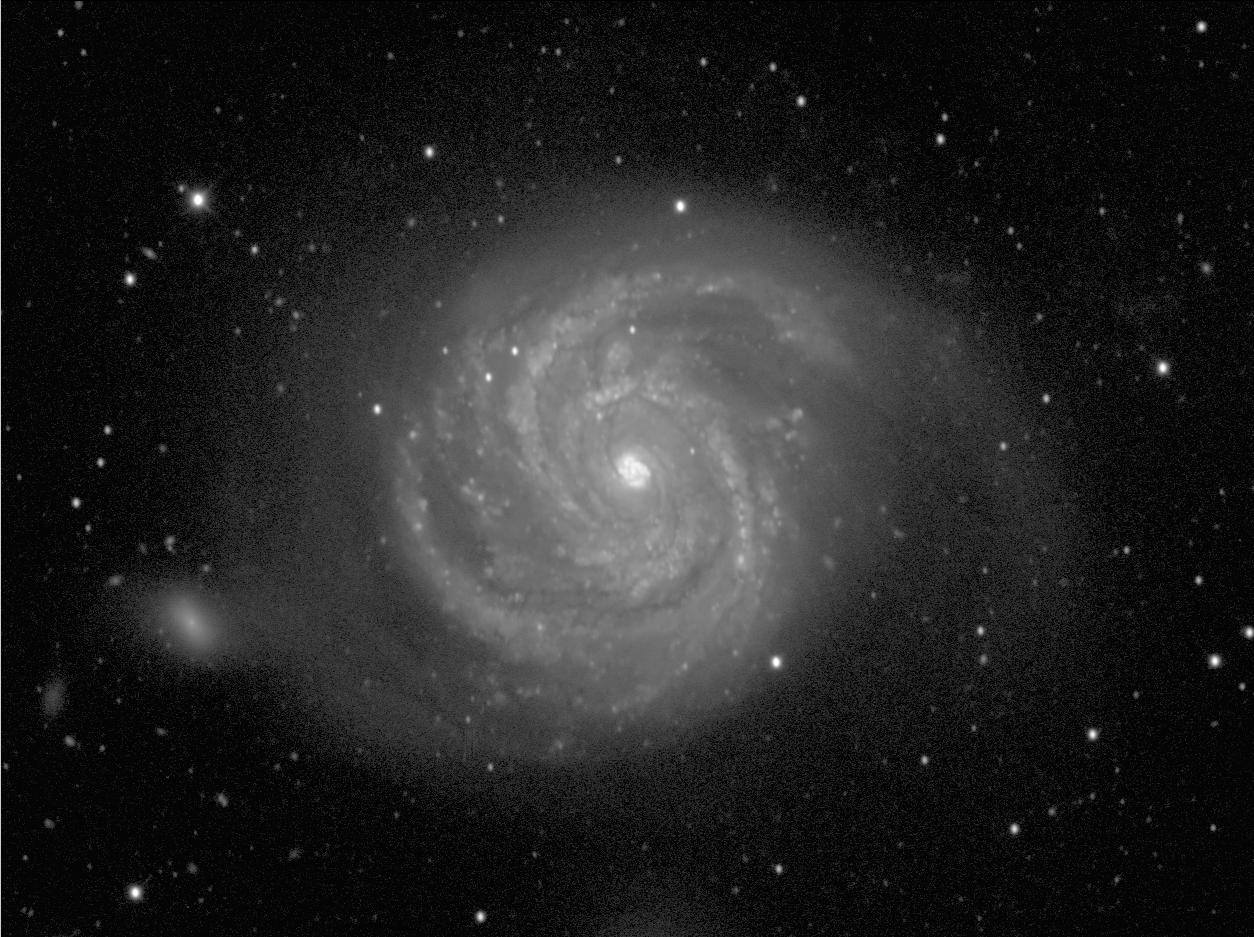

De Vaucouleurs Atlas Type: SAB(s)bc
Filter: B
Telescope: USNO 1.0-m
North left , East
Field Dimensions: 14.2 x 10.6 arcminutes
RC3 Type: SAB(s)bc
RSA Type: Sc(s)I
Surface Brightness Range Displayed: 18.0-26.5 mag per square arcsec
Absolute Blue Magnitude: -20.8
Elmegreen Spiral Arm Class: AC12
De Vaucouleurs Atlas Description:
NGC 4321 is one of the best-known members of the Virgo Cluster . Its structure is dominated by two major spiral arms of high contrast. These arms break perpendicularly from the ends of a weak bar, which is mostly an oval feature with conspicuous curved leading dust lanes. These lanes show the kind of branching seen in more conventional bars. The spiral pattern is ``grand design " and very regular. In the center, a small nuclear pseudoring is seen that is patchy and has a somewhat boxy appearance. This feature stands out as a distinct ring-shaped region of star formation in the B-R color index map, which also reveals the complex dust structure and some indication that the dust lanes follow the concave sides of the spiral arms.
The B-R color index map also shows that the star-forming disk of NGC 4321 has a well-defined edge, i.e., the star-forming disk truncates. This could reflect the impact of environment on the gaseous disk (Koopmann and Kenney 2004). In the outer parts of the galaxy, broad diffuse spiral features are seen extending well beyond the two main inner arms.
The nuclear ring/spiral structure of M100 has been among the most thoroughly studied likely ILR regions of galaxies (see Knapen et al. 2000 and references therein). The near-IR view of the region includes a secondary stellar bar (first noted by Pierce 1986; see also Erwin 2004) surrounded by an annular star-forming zone. The secondary bar is only slightly misaligned with the primary bar (Pierce 1986). Leading armlets are found near the ends of the secondary bar , features which suggest that the bar extends to near the inner ILR of two ILR 's. From high resolution UKIRT observations, Ryder and Knapen (1999) detected many young star-forming regions in the nuclear ring of M100.
The Atlas image also shows several small companions to M100, the brightest being NGC 4322 north of the nucleus. According to Binggeli, Sandage, and Tammann (1985), NGC 4322 is type dE4,N, meaning it is a nucleated dwarf elliptical.